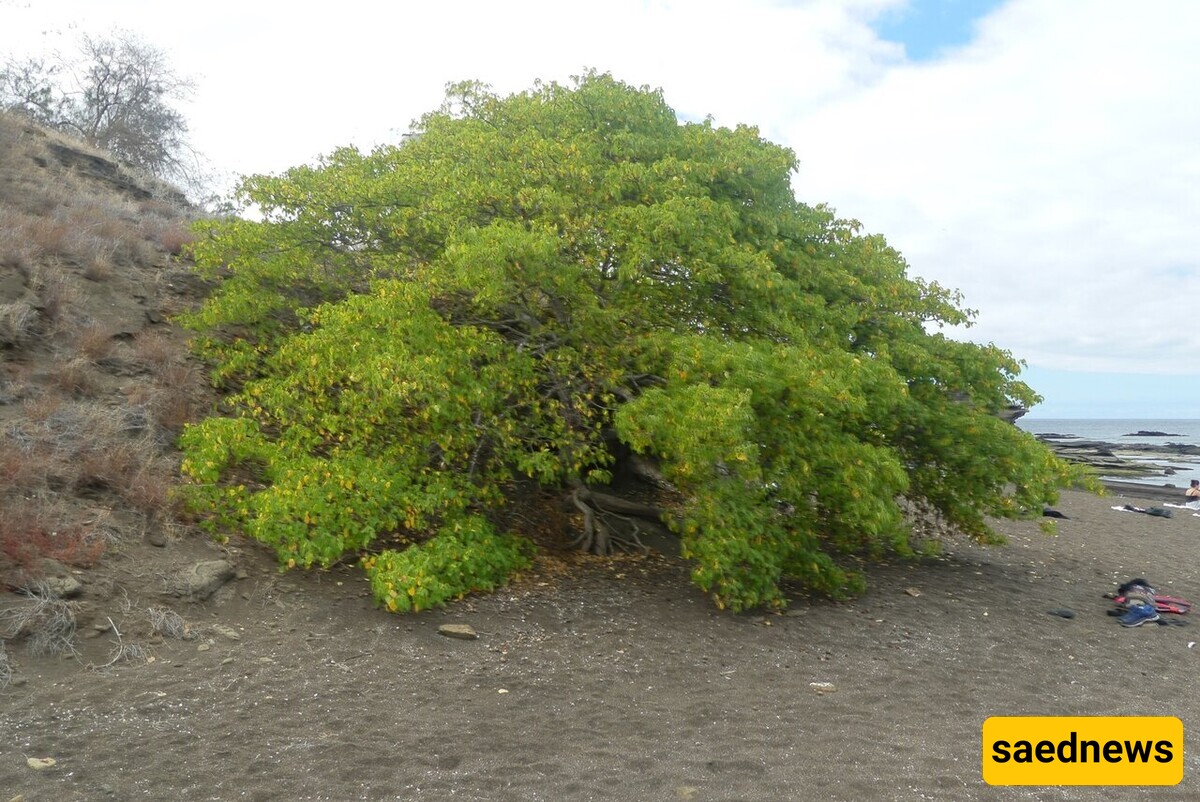The Manchineel tree is a highly toxic and dangerous tree that grows in parts of America, and even touching it can be fatal.

According to the family magazine service of Saed News, this tree is extremely poisonous. You can't even stand under it during the rain. In 1999, radiologist Nicole Strickland went on vacation to the Caribbean island of Tobago, a tropical village with lush and expansive beaches. On the first morning, she went out to explore shells and corals on the white sand, hoping to escape the boredom.
Amid coconuts and mangoes on the beach, Strickland and her friend found green fruits with an unpleasant smell, which looked very much like small apples. Foolishly, they decided to take a bite. After a few moments of sweet pleasure, they felt a burning sensation and tightness in their throats, which gradually worsened, making it hard to swallow. The fruit belonged to the Manchineel tree, sometimes called the "beach apple" or "poison guava." This tree is native to tropical regions of southern North America, as well as Central America, the Caribbean, and parts of northern South America. In Spanish, it is known as "arbol de la muerte," which literally means "tree of death." According to the Guinness World Records, the Manchineel tree is actually the world's most dangerous tree. As explained by the Florida Institute of Food and Agricultural Sciences, all parts of the Manchineel are extremely toxic, and "contact with or ingestion of any part of this tree may be lethal."
The Manchineel, a member of the large and diverse spurge family, which also includes the Christmas poinsettia, has a rough apple-like fruit and produces a milky sap that oozes from its bark, leaves, and even fruits. This sap can cause severe and painful inflammation upon contact with the skin. The sap contains a variety of toxins, but the most serious reactions are believed to be caused by phorbol, a type of diterpene ester.
Phorbol is highly soluble in water, so you wouldn't even want to stand under a Manchineel tree when it's raining. Even a single raindrop carrying the diluted toxin can cause severe skin burns. Because of these terrible traits, parts of the tree are often marked with red crosses, red rings, or even warning signs.
We could cut them all down now, but they play a massive role in local ecosystems. As large shrubs, Manchineel trees form dense thickets, which provide excellent windbreaks and protect against coastal erosion in Central America. Severe eye inflammation and even temporary blindness have been reported from smoke inhalation when burning Manchineel wood. However, Caribbean carpenters have used the wood in furniture for centuries after carefully cutting and drying it in the sun to remove the toxic sap.
The real threat of death comes from eating the small fruit. Ella Davies writes for the BBC: "The fruit can cause death through severe vomiting and diarrhea, leading the body to reach a point of dehydration."
Fortunately, Ms. Strickland and her friend survived to tell their story because they only consumed a small amount of the deadly fruit. In 2000, she published an article in the British Medical Journal describing the symptoms in detail. It took over eight hours for the pain to subside slowly. Although they drank Pina Colada and milk as a precaution, the toxin continued to destroy the lymph nodes in their necks, causing more pain.
She wrote: "Our experience and sharing it with the locals created fear, terror, and depression. The reputation of the poisonous tree was established, and we had a horrifying experience."


